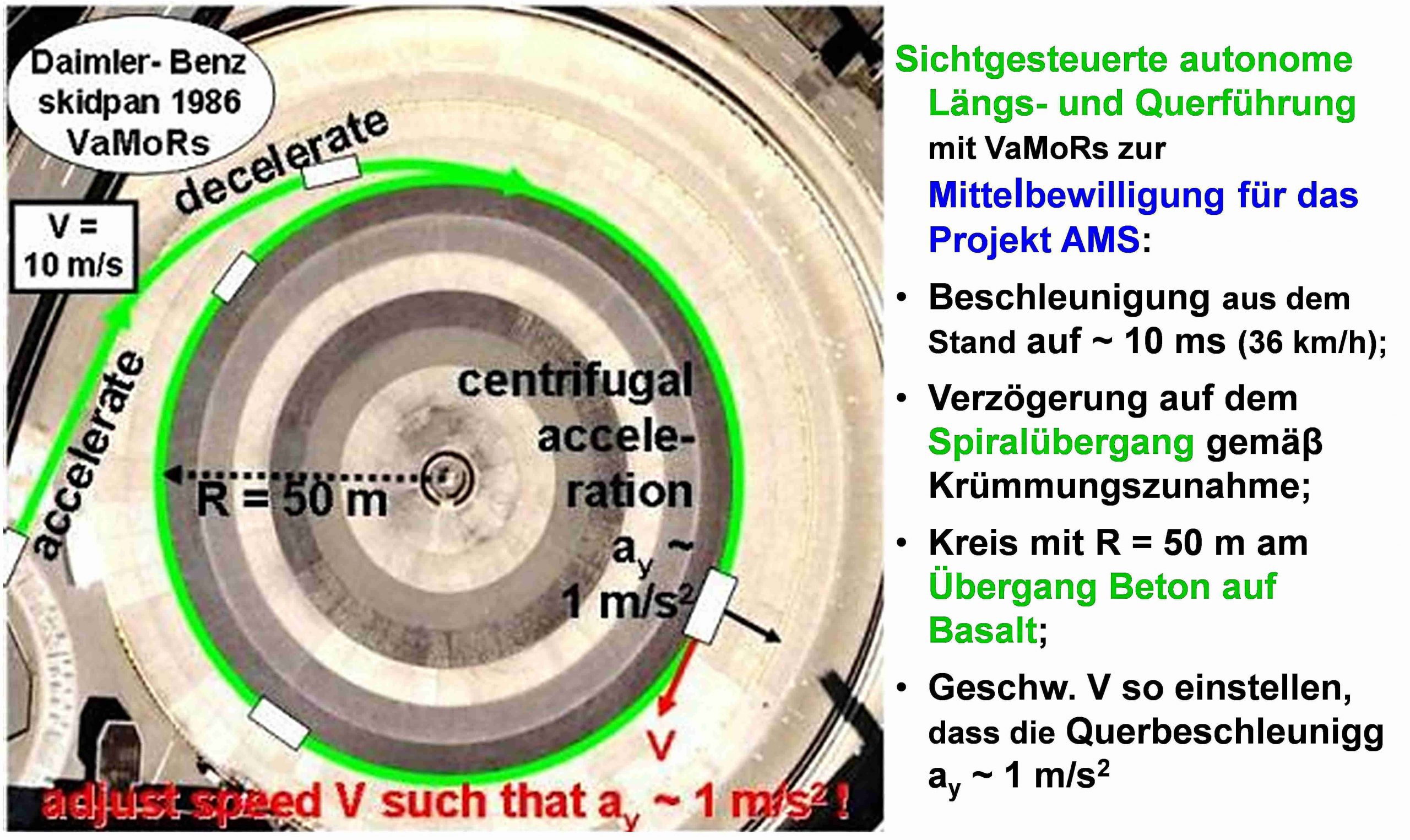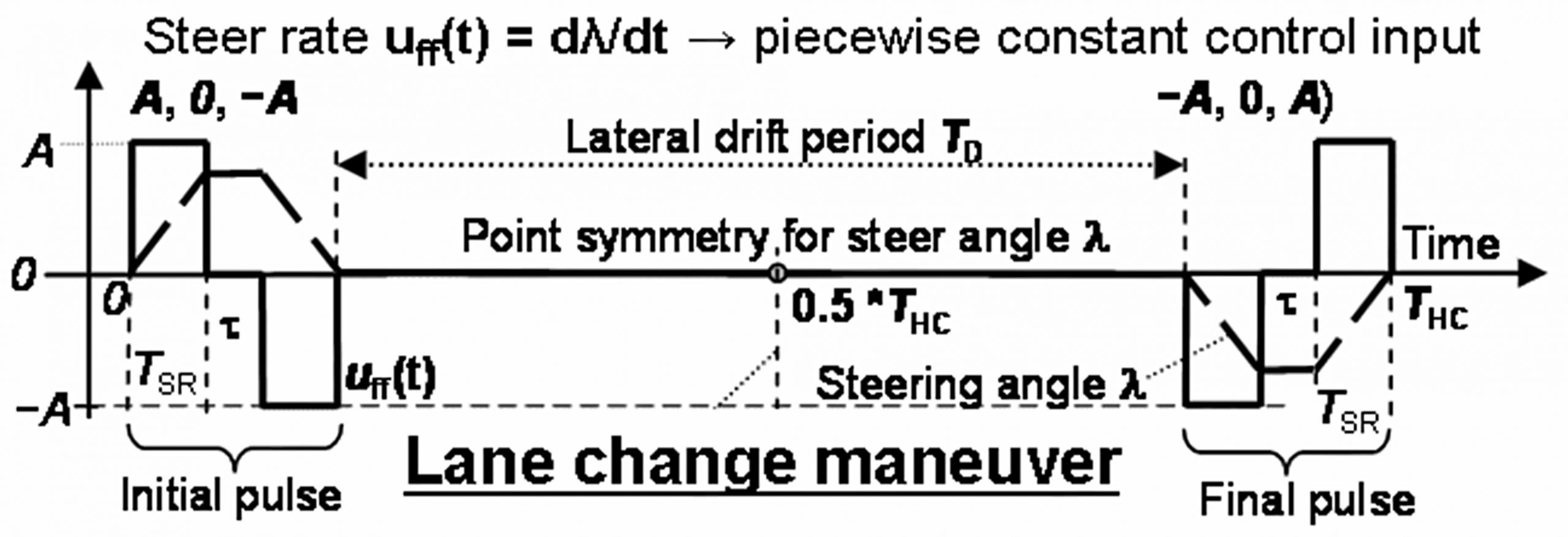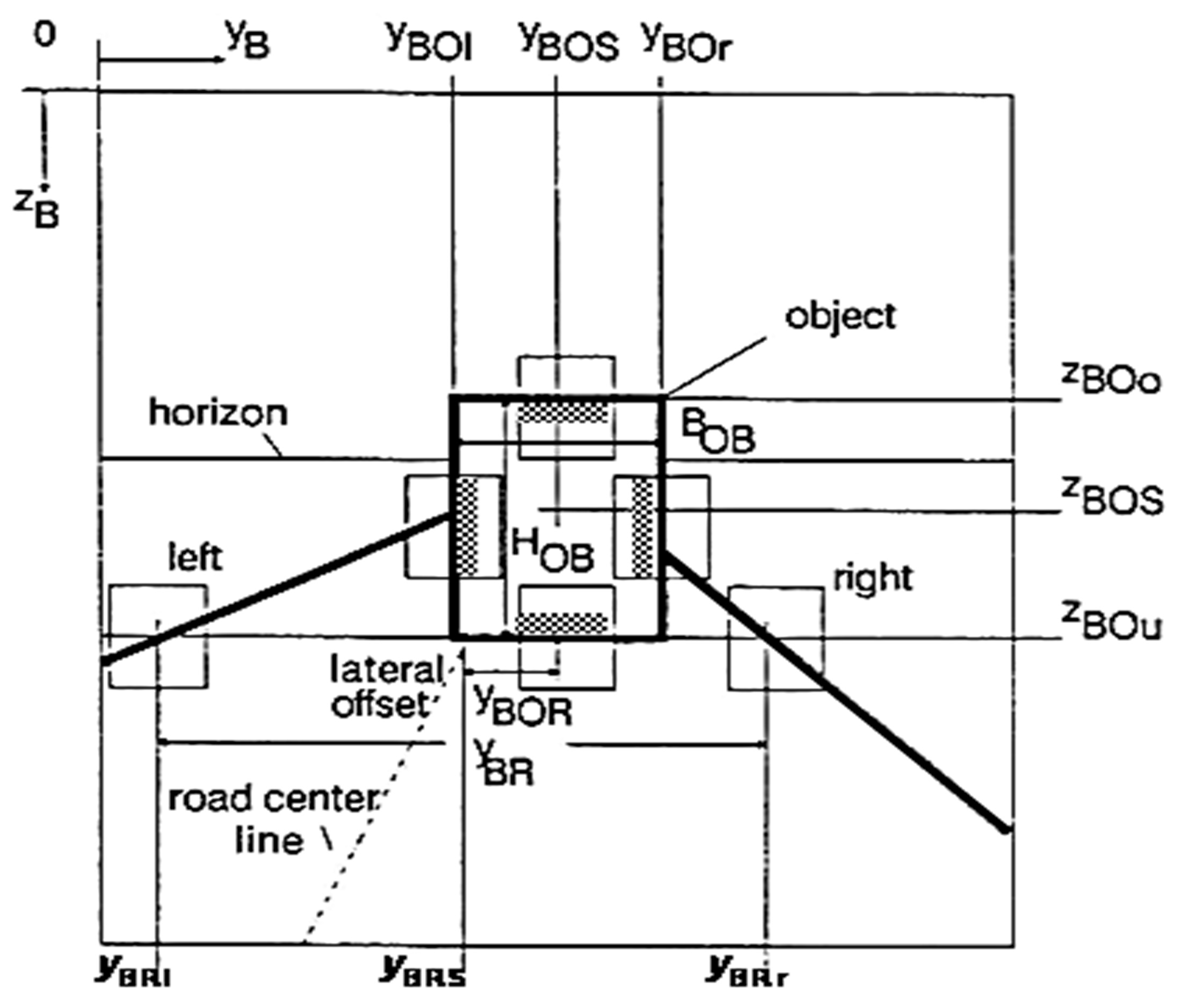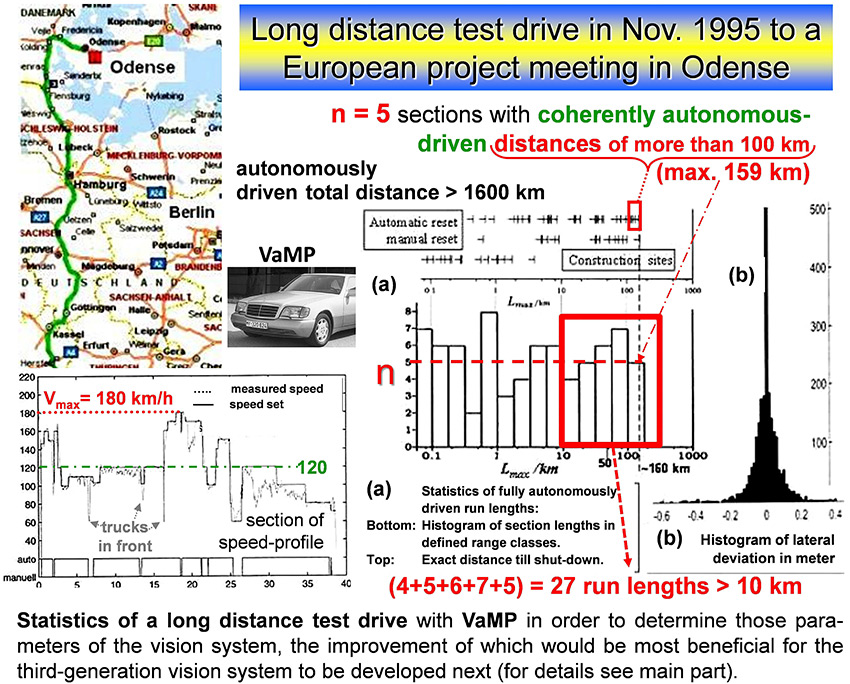A.3.1 Road recognition and vehicle guidance
- Shape description by curvature (change of direction over arc length)
- recognition by aggregated edge features (smooth continuation)
- relative ego-state from features nearby (in lower part of image)
- expectation-guided, efficient feature extraction including steer angle control output.
Vehicle guidance by feed-forward control from curvature and super-imposed state feedback with integral component of lateral offset.
A.3.2 Skidpan demo to Daimler-Benz AG 1986
First demonstration of dynamic vision capabilities for road vehicle guidance to Daimler-Benz Research:
- Longitudinal & lateral guidance with lateral acceleration feedback;
- speed range from 0 to 36 km/h (10 m/s), autonomous reduction to Vmax,curve = 7 m/s circling speed with radius ~ 50 m, yielding ~ 0.1 g lateral acceleration.

A.3.3 Various types of roads with / without lane markings:
- High-speed roads with multiple lanes and lane markings,
- sealed roads without lane markings, with & without curbstones,
- shadows from trees and buildings in all seasons.
- Unsealed roads with noisy transition to shoulders.
A.3.4 Lane change
on a free road since 1987, situation-dependent feed-forward control time history with super-imposed (delayed) feedback in new lane. Autonomous lane change decision 1994.
A.3.5 Perception of horizontal and vertical curvature
decoupled by differential geometry formulation (vertical profile above the horizontal one), ~ constant road width for observability;
A.3.6.1 Single obstacle detection and avoidance
A.3.6.1a VaMoRs with 1st-generation vision system BVV2
Monocular motion stereo, an integral part of the 4-D approach; Underlying assumption:
- Gravity pulls both the obstacle and the own vehicle onto the flat ground;
- view fixation by alternative centering of gaze direction horizontally and vertically on the vertical and horizontal centers of edge features.
- Approach speed up to ~ 40 km/h.
A.3.6.1b Stop & Go behind another road vehicle (Prometheus 1991)
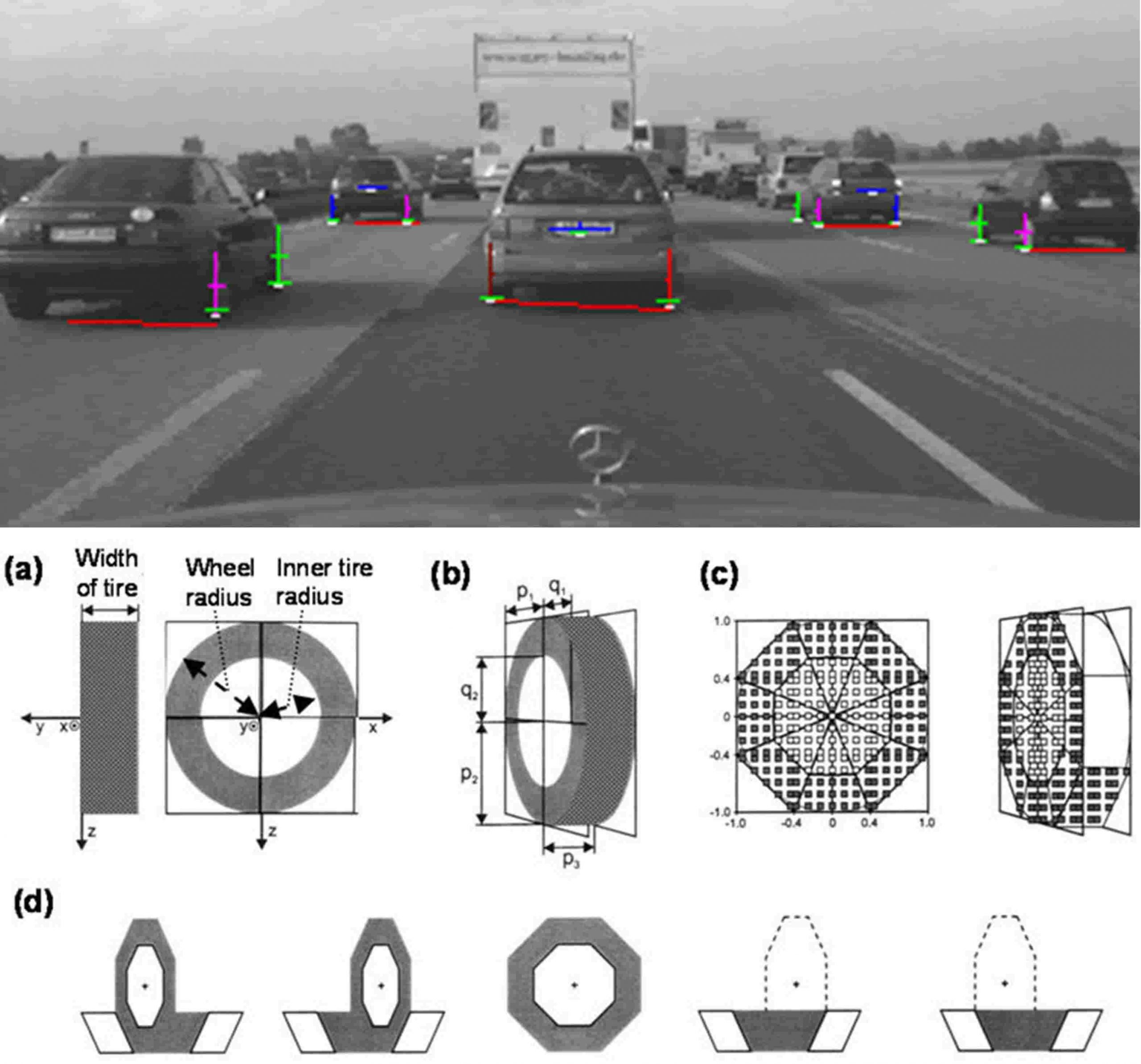
A.3.6.2 Multiple obstacle detection and avoidance
A.3.6.2a Cruise control with multiple vehicle detection and tracking:
Monocular stereo interpretation in own and neighboring lanes (Prometheus 1994); up to 5 vehicles in front and rear hemisphere.
H.1.2 Integrated Transputer System
A.3.6.2b Wheel recognition under oblique views:
Special region-based templates for oblique views from the side (2004)

A.3.6.3 Hybrid Adaptive Cruise Control (1999)
Bifocal vision complementing an industrial radar system for more robust distance keeping, VaMP with early version of EMS-vision system;
Longitudinal control fully autonomous, lateral control by human driver to keep him „in the loop“ for better attention.

A.3.6.4 Long-lead-time studies of more demanding vision tasks – A.3.6.4a Recognition of 3-D shape and occlusion of trucks
Approximation of upper body by a rectangular box;
determine size parameters from oblique views; early hypothesis generation from partial uncovering of occlusion.
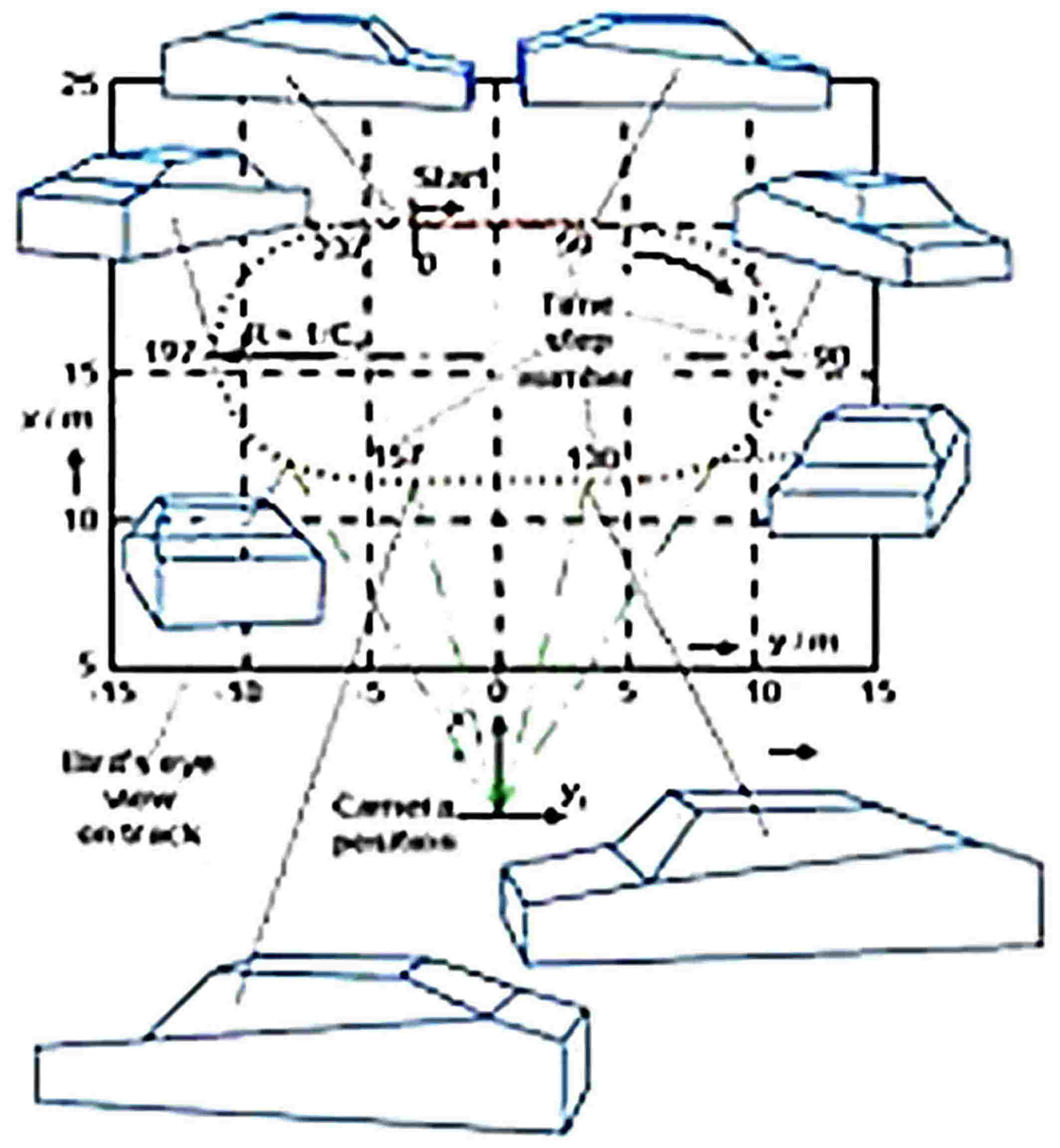
A.3.6.4b Recognition of 3-D vehicle shape and trajectory driven
Parameterized vehicle classes from different car types to trucks,
stationary camera fixating the car driving on an oval course;
Task: Recognize vehicle type and trajectory driven.
A.3.6.4c Recognition of humans in traffic scenes
Human body modeled with 22 articulated elements;
recognize mode of motion (gait) and step frequency & amplitude.
A.3.6.4d Detection and recognition of ditches
(negative obstacles) while driving off-road on grass surface at speeds up to 10 km/h. EMS-vision including horopter-stereo with ACADIA-board (Sarnoff / PVS), saccadic perception of size of ditch for moving around it.
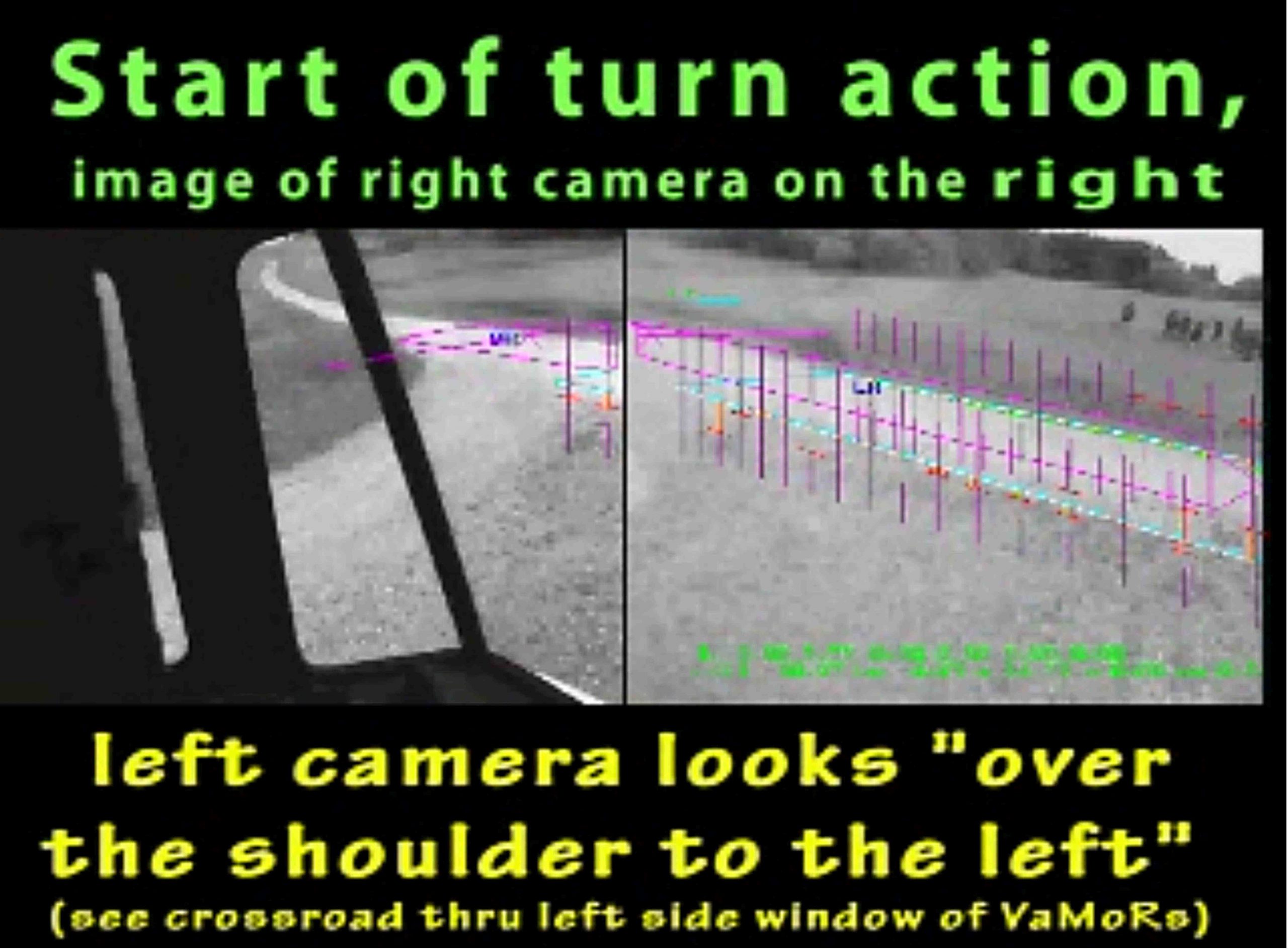
A.3.7 Turning off onto an unknown crossroad
Perception of interception angle, road width and distance,
Triggered feed-forward maneuver with superimposed feedback in final phase on the crossroad.
A.3.8 LongDistanceDrive VaMP 1995 (Munich – Odense, Denmark)
Collect statistical data on performance level achieved at the end of the 2nd-generation (black / white, edge-based) dynamic vision system;
> 1600 km (~ 95%) driven autonomously (longitudinal & lateral)
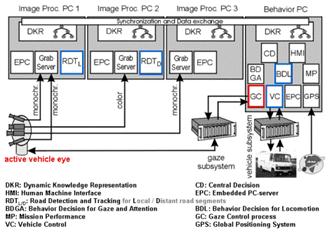
A.3.9 On-Off-Road Mission performance 2003
Final demonstrations of the capabilities developed with
H.1.3 EMS vision system
On- / off-road driving, transitions, turn-offs, avoid negative obstacles.

